|
|
|

|
|
2012 (vol. 12)
|
|
Letter 4 [2012]: Inflation in the number of monospecific genera in brachiopod: progress or regression? A trivial approach to a real problem, by Rémy GOURVENNEC.-
Format [HTML] or [PDF
302 KB]
Reference: [CG2012_L04]
DOI: 10.4267/2042/48396
Lang.:
|
|
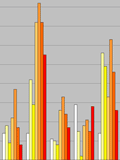 Abstract: Since the 19th century, about 1800 brachiopod genera or subgenera have been erected for the period covering the Silurian to the Devonian. In recent years, there has been a pronounced increase in the number of genera containing a single species. Without questioning the technological advances, one can, however, question the value and usefulness of monospecific genera both for systematics and palaeogeographical studies. Some editorial policy regarding erection of new monospecific genera and/or the evaluation of calls for projects are now needed. Abstract: Since the 19th century, about 1800 brachiopod genera or subgenera have been erected for the period covering the Silurian to the Devonian. In recent years, there has been a pronounced increase in the number of genera containing a single species. Without questioning the technological advances, one can, however, question the value and usefulness of monospecific genera both for systematics and palaeogeographical studies. Some editorial policy regarding erection of new monospecific genera and/or the evaluation of calls for projects are now needed.
|
|
Online since December 25, 2012
|
|
Memoir 2 [2012]: Mediterranean Neocomian belemnites, part 4: belemnites of the Barremian stratotype section, by Nico M.M. JANSSEN, Arnaud CLÉMENT & Willem BONT.-
Format [HTML]
or [PDF
10,329 KB]
Reference: [CG2012_M02]
DOI: 10.4267/2042/48307
Lang.:
|
|
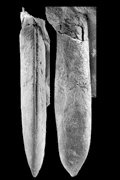 Abstract: This paper deals with the distribution of belemnites in the latest Hauterivian to early Bedoulian of the Angles Barremian Stratotype Section (ABSS). The distribution of the belemnites in the ABSS is not uniform, mainly due to the inaccessibility of certain beds. To cover this, and to compare the distribution with more proximal settings, we investigated a section to the north of Le Bourguet. The latest Hauterivian sediments mainly yield Hibolithes ex gr. subfusiformis besides some Duvalia ex gr. dilatata. The earliest Barremian sediments deliver a richer association that yields the last Hibolithes spp. The first typical Barremian belemnites occur just one bed above the Hauterivian-Barremian boundary based on ammonites. This belemnite association (BaBA1) consists of Duvalia ex gr. silesiaca-gagrica, Duvalia pontica and several species of Hibolithes. At the boundary between the Nicklesia pulchella and the Kotetishvilia compressissima zones the diversity increases and the first classical Barremian belemnites occur. These were formerly attributed to Mesohibolites (BaBA2). These species are herein attributed to a new genus Shvetsovia. Together with the duvaliids from BaBA1 they were first described from Abkhasia by Shvetsov (1913).
The latest Early Barremian (BaBA3) and the earliest Late Barremian (BaBA4) show well diversified belemnite associations, with many classical species, dominated by few genera closely resembling the true Mesohibolites. Eventually, these belemnite associations are compared to more proximal sections within the Vocontian Basin, and areas outside the Vocontian Basin (chiefly Hungary and Georgia). Some differences in the frequency and abundance of several species in these different palaeogeographical settings are believed to indicate differences in natural habitat. Duvalia ex gr. grasiana appears to be more abundant in more distal sections, while juvenile Mesohibolitidae, Conohibolites and Curtohibolites appear to be more abundant in the more proximal environments. Finally, a biozonation is presented and defined based on the distribution of the belemnites in the ABSS. This biozonation appears applicable in the more proximal sections, although some biozones are diachronous. The first Mesohibolites occur in the Upper Barremian Imerites giraudi Zone. In the Barremian-Bedoulian boundary sediments, as defined in the ABSS, Neohibolites first occurs, but the latter is only dominant in the marly sediments above the "calcareous Bedoulian". In the Late Barremian-early Bedoulian seven main belemnite associations can be distinguished, viz. BaBA5, BaBA6, BaBA7, BdBA1, BdBA2, BdBA3 and BdBA4. The following new species and genera are described: Hibolithes keleptrishvilii sp. nov. (latest Hauterivian), Duvalia vermeuleni sp. nov. (Early Barremian), Curtohibolites (?) bourguetensis sp. nov. (Early Barremian), and Shvetsovia gen. nov. (late Early-early Late Barremian). Besides, the Late Barremian yields the new species Mesohibolites anglesensis. Moreover, eleven species are described in open-nomenclature. Abstract: This paper deals with the distribution of belemnites in the latest Hauterivian to early Bedoulian of the Angles Barremian Stratotype Section (ABSS). The distribution of the belemnites in the ABSS is not uniform, mainly due to the inaccessibility of certain beds. To cover this, and to compare the distribution with more proximal settings, we investigated a section to the north of Le Bourguet. The latest Hauterivian sediments mainly yield Hibolithes ex gr. subfusiformis besides some Duvalia ex gr. dilatata. The earliest Barremian sediments deliver a richer association that yields the last Hibolithes spp. The first typical Barremian belemnites occur just one bed above the Hauterivian-Barremian boundary based on ammonites. This belemnite association (BaBA1) consists of Duvalia ex gr. silesiaca-gagrica, Duvalia pontica and several species of Hibolithes. At the boundary between the Nicklesia pulchella and the Kotetishvilia compressissima zones the diversity increases and the first classical Barremian belemnites occur. These were formerly attributed to Mesohibolites (BaBA2). These species are herein attributed to a new genus Shvetsovia. Together with the duvaliids from BaBA1 they were first described from Abkhasia by Shvetsov (1913).
The latest Early Barremian (BaBA3) and the earliest Late Barremian (BaBA4) show well diversified belemnite associations, with many classical species, dominated by few genera closely resembling the true Mesohibolites. Eventually, these belemnite associations are compared to more proximal sections within the Vocontian Basin, and areas outside the Vocontian Basin (chiefly Hungary and Georgia). Some differences in the frequency and abundance of several species in these different palaeogeographical settings are believed to indicate differences in natural habitat. Duvalia ex gr. grasiana appears to be more abundant in more distal sections, while juvenile Mesohibolitidae, Conohibolites and Curtohibolites appear to be more abundant in the more proximal environments. Finally, a biozonation is presented and defined based on the distribution of the belemnites in the ABSS. This biozonation appears applicable in the more proximal sections, although some biozones are diachronous. The first Mesohibolites occur in the Upper Barremian Imerites giraudi Zone. In the Barremian-Bedoulian boundary sediments, as defined in the ABSS, Neohibolites first occurs, but the latter is only dominant in the marly sediments above the "calcareous Bedoulian". In the Late Barremian-early Bedoulian seven main belemnite associations can be distinguished, viz. BaBA5, BaBA6, BaBA7, BdBA1, BdBA2, BdBA3 and BdBA4. The following new species and genera are described: Hibolithes keleptrishvilii sp. nov. (latest Hauterivian), Duvalia vermeuleni sp. nov. (Early Barremian), Curtohibolites (?) bourguetensis sp. nov. (Early Barremian), and Shvetsovia gen. nov. (late Early-early Late Barremian). Besides, the Late Barremian yields the new species Mesohibolites anglesensis. Moreover, eleven species are described in open-nomenclature.
|
|
Online since December 10, 2012
|

|
|
Articles
|
|
Article 8 [2012]: On the origin of the genus name Thecidea, a review, by Christian C. EMIG.-
Format [HTML] or [PDF
812 KB]
Reference: [CG2012_A08]
DOI:
10.4267/2042/48306
Lang.:
|
|
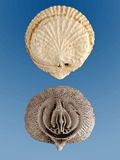 Abstract: The genus Thecidea has been figured before it was described that gave rise to various and erroneous interpretations, in particular by English-writing authors. It must be undoubtedly attributed to Defrance in Cuvier & Brongniart (1822). Four other descriptions derived from the original name Thecidea are nomen nullum, and are partially responsible for confusion before Thecidea was split in several new genera. Finally, only fossil species belong today to Thecidea. The history of the attribution of the author's name to Thecidea is described in detail. The type species and its synonyms, as well as the classification of the Thecidea are given. Abstract: The genus Thecidea has been figured before it was described that gave rise to various and erroneous interpretations, in particular by English-writing authors. It must be undoubtedly attributed to Defrance in Cuvier & Brongniart (1822). Four other descriptions derived from the original name Thecidea are nomen nullum, and are partially responsible for confusion before Thecidea was split in several new genera. Finally, only fossil species belong today to Thecidea. The history of the attribution of the author's name to Thecidea is described in detail. The type species and its synonyms, as well as the classification of the Thecidea are given.
|
|
Online since December 10, 2012
|
|
Article 7 [2012]: Encrustation and bioerosion on late Sheinwoodian (Wenlock, Silurian) stromatoporoids from Saaremaa, Estonia, by Olev VINN & Mark A. WILSON.-
Format [HTML] or [PDF
2,048 KB]
Reference: [CG2012_A07]
DOI:
10.4267/2042/47551
Lang.:
|
|
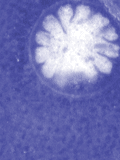 Abstract: A shallow shelf carbonate platform (pelletal limestone facies) stromatoporoid association from the late Sheinwoodian of Saaremaa (Baltica) contains a diverse assemblage of sclerobionts (both
epi- and endobionts). The studied stromatoporoids vary from low domical to extended domical shapes. Cornulites sp.
aff. C. stromatoporoides, Conchicolites sp., Anticalyptraea calyptrata,
microconchids, tabulate (Aulopora sp., Catenipora sp. and
favositids) and rugose corals, sheet-like trepostome bryozoans, and discoidal crinoid holdfasts encrust the stromatoporoids. The dominant sclerozoans were tabulate and rugose corals, which is significantly different from several analogous Silurian sclerobiont communities. There may have been taxonomic polarity between an upper surface and a cryptic sclerozoan community. Bioerosion occurs as macroborings in 45.5 % of studied (N=22) stromatoporoids. Endobionts were represented by Trypanites and Palaeosabella borings, as well as embedded symbiotic
rugose corals and Cornulites stromatoporoides. Abstract: A shallow shelf carbonate platform (pelletal limestone facies) stromatoporoid association from the late Sheinwoodian of Saaremaa (Baltica) contains a diverse assemblage of sclerobionts (both
epi- and endobionts). The studied stromatoporoids vary from low domical to extended domical shapes. Cornulites sp.
aff. C. stromatoporoides, Conchicolites sp., Anticalyptraea calyptrata,
microconchids, tabulate (Aulopora sp., Catenipora sp. and
favositids) and rugose corals, sheet-like trepostome bryozoans, and discoidal crinoid holdfasts encrust the stromatoporoids. The dominant sclerozoans were tabulate and rugose corals, which is significantly different from several analogous Silurian sclerobiont communities. There may have been taxonomic polarity between an upper surface and a cryptic sclerozoan community. Bioerosion occurs as macroborings in 45.5 % of studied (N=22) stromatoporoids. Endobionts were represented by Trypanites and Palaeosabella borings, as well as embedded symbiotic
rugose corals and Cornulites stromatoporoides.
|
|
Online since October 2, 2012
|
|
Letter 3 [2012]: A new upper Bedoulian section in the Aptian stratotypic area: Croagnes (5 km NW of Gargas, Vaucluse, SE France), by Michel MOULLADE, Guy TRONCHETTI, Christine BALME & Pascal MAUROUX.-
Format [HTML] or [PDF
1,105 KB]
Reference: [CG2012_L03]
DOI: 10.4267/2042/47550
Lang.:
|
|
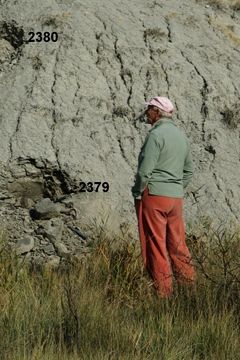 Abstract: The discovery and
exploitation of a new outcrop of the "A1 Unit of yellow marls and marly limestones" of Leenhardt
(1883), comprised between the Urgonian limestones and the "Aptian marls" of
the authors, leads to question the generalized attribution of this formation to
the Deshayesites grandis ammonite Subzone.
Data from this section at Croagnes rather lead to place A1, at least locally in the stratotypic area of the
surroundings of Apt, at the level of the onset of the anoxic event OAE1a, just
below the Roloboceras hambrovi Subzone. The assumed isochroneity of this Unit is also questioned. Abstract: The discovery and
exploitation of a new outcrop of the "A1 Unit of yellow marls and marly limestones" of Leenhardt
(1883), comprised between the Urgonian limestones and the "Aptian marls" of
the authors, leads to question the generalized attribution of this formation to
the Deshayesites grandis ammonite Subzone.
Data from this section at Croagnes rather lead to place A1, at least locally in the stratotypic area of the
surroundings of Apt, at the level of the onset of the anoxic event OAE1a, just
below the Roloboceras hambrovi Subzone. The assumed isochroneity of this Unit is also questioned.
|
|
Online since October 2, 2012
|
|
Memoir
1 [2012]: Study of the Phylloceratoidea fauna of
the Valanginian marls of Senez-Lioux (Alpes-de-Haute-Provence, France).
Comparison with some Drôme and Ardèche Valanginian localities, by Bernard JOLY & Philippe MERCIER.-
Format [HTML]
or [PDF
7,154 KB]
Reference: [CG2012_M01]
DOI: 10.4267/2042/47505
Lang.:
|
|
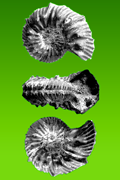 Abstract: The recent
"Révision de la Paléontologie française de d'Orbigny
(1840-42, tome premier, Terrains crétacés)" has allowed
a better understanding of Ammonites calypso (d'Orbigny,
1841), so that a more accurate age of the species
is known at its type-locality. At first the authors of this memoir had searched
for other specimens in the Valanginian marls of Senez-Lioux in order to give it the most correct age. Abstract: The recent
"Révision de la Paléontologie française de d'Orbigny
(1840-42, tome premier, Terrains crétacés)" has allowed
a better understanding of Ammonites calypso (d'Orbigny,
1841), so that a more accurate age of the species
is known at its type-locality. At first the authors of this memoir had searched
for other specimens in the Valanginian marls of Senez-Lioux in order to give it the most correct age.
The Phylloceratoidea do not give a precise age of the
strata from which the specimens were collected so the authors have determined the ammonites
from five successive horizons. This work has shown the Lower Valanginian and two zones of Upper Valanginian
(the zone with Verrucosum and the zone with Peregrinus ?, the presence of this last zone is
less certain). The zone with Furcillata of Upper Valanginian has not been proved.
The Phylloceratoidea are abundant in Senez-Lioux. Six species have been identified: Phylloceras (Hypophylloceras) serum (Oppel,
1865), Phylloceras (Hypophylloceras) tethys (d'Orbigny,
1841), Sowerbyceras calypso (d'Orbigny,
1841), Ptychophylloceras (Semisulcatoceras) semisulcatum semisulcatum (d'Orbigny,
1841), Ptychophylloceras (Semisulcatoceras) semisulcatum (d'Orbigny,
1841) diphyllum (d'Orbigny,
1841), Phyllopachyceras rogersi (Kitchin,
1908) and a new species: Phylloceras (Goretophylloceras) liouxense n. sp. This
new species was found in the Alpes-de-Haute-Provence (material collected by Philippe Mercier and Bernard Joly) and
in the Drôme area (material collected by Laurent Vareilles and Philippe Mercier).
These ammonites are small (diameter 5-28 mm) and seem to belong to the
juvenile stage. For a long time the Vocontian basin seems to have been the
egg-laying area of these Cephalopods. In the Valanginian marls there are specimens whose diameter is
less than 5 mm. They have not been determined in this study. However their presence is
significant. The pyritic specimens and the iron oxide specimens (for example the
limonitic specimens) are not necessarily small in size. In the marly facies there are very large
pyritic specimens, which are among the largest known (Joly,
2000, p. 173). In Senez-Lioux the smallest specimens are not the nuclei of the
largest ones. They are not small adults because we are unable to see the contraction of the last septa
showing the slowing down of their growth. The beginning of the body chamber,
which is present in many of the specimens, proves that these specimens were
merely not nuclei and definitely they have not attained sexual maturity.
The many specimens gathered permitted a statistical study of the populations especially of the species Phylloceras (Hypophylloceras) serum (Oppel,
1865), Phylloceras (Hypophylloceras) tethys (d'Orbigny,
1841), Phylloceras (Goretophylloceras) liouxense n. sp., Ptychophylloceras (Semisulcatoceras) semisulcatum semisulcatum (d'Orbigny,
1841), and Ptychophylloceras (Semisulcatoceras) semisulcatum (d'Orbigny,
1841) diphyllum (d'Orbigny,
1841). The species Sowerbyceras calypso (d'Orbigny,
1841) and Phyllopachyceras rogersi (Kitchin,
1908) are represented by very few specimens.
The fossils gathered in some deposits from the Drôme and Ardèche area have
allowed us to further our knowledge about the Valanginian faunas of the Vocontian
Basin. In particular they have permitted the statistical study of a population of the very rare species Ptychophylloceras (Semisulcatoceras) semisulcatum semisulcatum (d'Orbigny,
1841) as only one specimen was identified among the fossils gathered in the deposits of
Senez-Lioux but is more abundant in the Valanginian from the Drôme.
|
|
Online since September 17, 2012
|
|
Letter 2 [2012]: Presence of Frambocythere
COLIN, 1980, (limnic ostracode) in the Maastrichtian of the Zagros Mountains, Iran: a newly recognized link between southern Europe and the Far East, by Jean-Paul COLIN, Hossein VAZIRI-MOGHADDAM, Amrollah SAFARI & Samira SHARIARI GRAI.-
Format [HTML] or [PDF
1,185 KB]
Reference: [CG2012_L02]
DOI: 10.4267/2042/47503
Lang.:
|
|
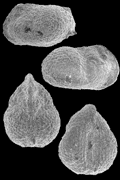 Abstract: The limnic ostracode Frambocythere tumiensis zagrosensis
subsp. nov. (Limnocytheridae, Timiriaseviinae), has been found for the first time in Iran. The
strata containing this species are in the lower part of the Tarbur Formation in the interior Fars of the Zagros Mountains. The
Late Maastrichtian age is indicated by rudists, larger foraminifers (Omphalocyclus macroporus, Loftusia spp.) and planktonic
foraminifers (Contusotruncana contusa-Racemiguembelina fructicosa Zone) present in the upper part of the Tarbur Formation. The Maastrichtian age is confirmed by the occurrence in the same
strata of the charophytes Platychara shanii, Peckichara cristellata and Stephanochara cf. producta. The genus Frambocythere Colin, 1980, was until now known mostly from the Upper Maastrichtian to Middle Eocene of southern Europe, India and China, as well
as the Albian of the Democratic Republic of Congo. The presence of Frambocythere gr. tumiensis in Iran is therefore a newly recognized link between southern Europe and the Far East (China). Abstract: The limnic ostracode Frambocythere tumiensis zagrosensis
subsp. nov. (Limnocytheridae, Timiriaseviinae), has been found for the first time in Iran. The
strata containing this species are in the lower part of the Tarbur Formation in the interior Fars of the Zagros Mountains. The
Late Maastrichtian age is indicated by rudists, larger foraminifers (Omphalocyclus macroporus, Loftusia spp.) and planktonic
foraminifers (Contusotruncana contusa-Racemiguembelina fructicosa Zone) present in the upper part of the Tarbur Formation. The Maastrichtian age is confirmed by the occurrence in the same
strata of the charophytes Platychara shanii, Peckichara cristellata and Stephanochara cf. producta. The genus Frambocythere Colin, 1980, was until now known mostly from the Upper Maastrichtian to Middle Eocene of southern Europe, India and China, as well
as the Albian of the Democratic Republic of Congo. The presence of Frambocythere gr. tumiensis in Iran is therefore a newly recognized link between southern Europe and the Far East (China).
|
|
Online since September 17, 2012
|
|
Article 6 [2012]: Proposal for the Thuoux section as a candidate for the GSSP of the base of the Oxfordian stage, by Dominique FORTWENGLER, Didier MARCHAND, Alain BONNOT, Rémi JARDAT & Daniel RAYNAUD.-
Format [HTML] or [PDF
1,097 KB]
Reference: [CG2012_A06]
DOI:
10.4267/2042/47431
Lang.:
|
|
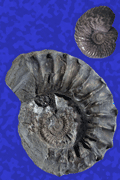 Abstract: The Thuoux section, located in South-Eastern Basin of France (coordinates: 44°30'55"E; 5°42'25"N), is a section that satisfies numerous demanding criteria as reference section (GSSP) for the base of the Oxfordian stage. Sedimentation was continuous in that the abundant ammonitic fauna yields no detectable hiatuses. The stratigraphic boundary is located between the Lamberti Zone and the Mariae Zone or more precisely between the Paucicostatum horizon (Marchand,
1979) and the Thuouxensis horizon (Fortwengler & Marchand,
1994a). In this section, there is a perfect
mixing between Boreal ammonites (Cardioceratinae) whose species are used as stratigraphic
markers and Submediterranean/Subboreal ammonites (Hecticoceratinae, Peltoceratinae and Perisphinctinae) that provide further possibilities for wide correlation of this boundary. Finally, parallel
ammonite zonations have been established with
great precision (biohorizons and sometimes "sub-biohorizons") in various areas of France, with different
palaeoenvironments. The Thuoux section permits correlations with central and eastern Europe as well as North America, based on Cardioceratinae successions, and with South America, using Peltoceratinae. Thickness of the Callovian-Oxfordian transitional beds in the Thuoux section has allowed
detailed sedimentological studies and astronomical calibration of the Lower Oxfordian (Boulila,
2008; Boulila et al., 2008).
The Thuoux section is located at the centre of a set of more than thirty sections where the base of
the Oxfordian stage is visible (Fortwengler, 1989; Fortwengler
& Marchand, 1994a, b, c, d). Abstract: The Thuoux section, located in South-Eastern Basin of France (coordinates: 44°30'55"E; 5°42'25"N), is a section that satisfies numerous demanding criteria as reference section (GSSP) for the base of the Oxfordian stage. Sedimentation was continuous in that the abundant ammonitic fauna yields no detectable hiatuses. The stratigraphic boundary is located between the Lamberti Zone and the Mariae Zone or more precisely between the Paucicostatum horizon (Marchand,
1979) and the Thuouxensis horizon (Fortwengler & Marchand,
1994a). In this section, there is a perfect
mixing between Boreal ammonites (Cardioceratinae) whose species are used as stratigraphic
markers and Submediterranean/Subboreal ammonites (Hecticoceratinae, Peltoceratinae and Perisphinctinae) that provide further possibilities for wide correlation of this boundary. Finally, parallel
ammonite zonations have been established with
great precision (biohorizons and sometimes "sub-biohorizons") in various areas of France, with different
palaeoenvironments. The Thuoux section permits correlations with central and eastern Europe as well as North America, based on Cardioceratinae successions, and with South America, using Peltoceratinae. Thickness of the Callovian-Oxfordian transitional beds in the Thuoux section has allowed
detailed sedimentological studies and astronomical calibration of the Lower Oxfordian (Boulila,
2008; Boulila et al., 2008).
The Thuoux section is located at the centre of a set of more than thirty sections where the base of
the Oxfordian stage is visible (Fortwengler, 1989; Fortwengler
& Marchand, 1994a, b, c, d).
|
|
Online since July 14, 2012
|
|
Article 5 [2012]: Hunting for the 405-kyr eccentricity cycle phase at the Cretaceous-Paleogene boundary in the Aïn Settara section (Kalaat Senan, central Tunisia), by Michel HENNEBERT.-
Format [HTML] or [PDF
2,077 KB]
Reference: [CG2012_A05]
DOI:
10.4267/2042/47314
Lang.:
|
|
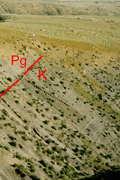 Abstract: The Aïn Settara section (Kalaat Senan, central Tunisia) shows a continuous and well exposed marl-limestone alternation, extending from the Upper Maastrichtian to the basal Danian. The section reveals the superposition of several cycles, which correspond to the combined astro-climatic effect of both eccentricity and precession. Based on the ~100-kyr eccentricity and the ~21-kyr precession cycles, a floating chronometric scale is proposed. Thanks to this scale, the sedimentary and biological events of the section are dated with respect to the Cretaceous-Paleogene (K-Pg) boundary taken as the reference. Highlighting the very stable 405-kyr eccentricity cycle allows on one side to confirm the relevance of the established time scale and on the other side to determine the phase of this important signal with respect to the K-Pg boundary event. Abstract: The Aïn Settara section (Kalaat Senan, central Tunisia) shows a continuous and well exposed marl-limestone alternation, extending from the Upper Maastrichtian to the basal Danian. The section reveals the superposition of several cycles, which correspond to the combined astro-climatic effect of both eccentricity and precession. Based on the ~100-kyr eccentricity and the ~21-kyr precession cycles, a floating chronometric scale is proposed. Thanks to this scale, the sedimentary and biological events of the section are dated with respect to the Cretaceous-Paleogene (K-Pg) boundary taken as the reference. Highlighting the very stable 405-kyr eccentricity cycle allows on one side to confirm the relevance of the established time scale and on the other side to determine the phase of this important signal with respect to the K-Pg boundary event.
|
|
Online since May 21, 2012
|
|
Article 4 [2012]: Paleontologic and stratigraphic overview of the Paleogene in eastern Saudi Arabia, by Nestor J. SANDER.-
Format [HTML] or [PDF
1,387 KB]
Reference: [CG2012_A04]
DOI: 10.4267/2042/47293
Lang.:
|
|
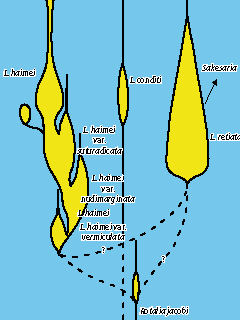 Abstract: The beds of early Tertiary age in eastern Saudi Arabia are in large part chemical precipitates laid down in a shallow epicontinental sea. The sequence is divided into three formations, each clearly differentiated in both lithology and fauna. From bottom to top they have been named the Umm er Radhuma, Rus and Dammam formations. Ecologic conditions remained more or less uniform for considerable lengths of time. Consequently, the fauna, made up mainly of Foraminifera, became well adapted to the environment, as demonstrated by the abundance of some species. The great number of individuals of these species have a range of variability much broader that that seen in other areas of their occurrence. The detailed study of these variations has demonstrated that species have often been defined on too small a number of individuals. The abundance of specimens has allowed evolutionary trends in species to be traced even to the extent that in the end some variants must be classed as a discrete genus. Abstract: The beds of early Tertiary age in eastern Saudi Arabia are in large part chemical precipitates laid down in a shallow epicontinental sea. The sequence is divided into three formations, each clearly differentiated in both lithology and fauna. From bottom to top they have been named the Umm er Radhuma, Rus and Dammam formations. Ecologic conditions remained more or less uniform for considerable lengths of time. Consequently, the fauna, made up mainly of Foraminifera, became well adapted to the environment, as demonstrated by the abundance of some species. The great number of individuals of these species have a range of variability much broader that that seen in other areas of their occurrence. The detailed study of these variations has demonstrated that species have often been defined on too small a number of individuals. The abundance of specimens has allowed evolutionary trends in species to be traced even to the extent that in the end some variants must be classed as a discrete genus.
|
|
Online since May 11, 2012
|
|
Letter 1 [2012]: Shell repair in Anticalyptraea (Tentaculita) in the late Silurian (Pridoli) of Baltica, by Olev VINN.-
Format [HTML] or [PDF
1,005 KB]
Reference: [CG2012_L01]
DOI:
10.4267/2042/46096
Lang.:
|
|
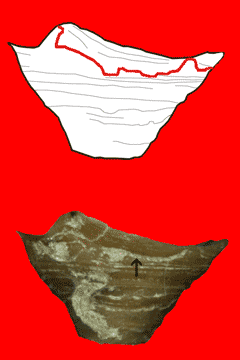 Abstract: Shell repair is common in the late Silurian (Pridoli) encrusting tentaculitoid tubeworm Anticalyptraea calyptrata from Saaremaa,
Estonia (Baltica), and is interpreted here as a result of failed predation. A. calyptrata has a shell repair frequency of 29 % (individuals with scars) with 17 specimens. There is probably an antipredatory adaptation,
i.e. extremely thick vesicular walls, in the morphology of Silurian Anticalyptraea. The morphological and ecological evolution of Anticalyptraea could thus have been partially driven by predation. Abstract: Shell repair is common in the late Silurian (Pridoli) encrusting tentaculitoid tubeworm Anticalyptraea calyptrata from Saaremaa,
Estonia (Baltica), and is interpreted here as a result of failed predation. A. calyptrata has a shell repair frequency of 29 % (individuals with scars) with 17 specimens. There is probably an antipredatory adaptation,
i.e. extremely thick vesicular walls, in the morphology of Silurian Anticalyptraea. The morphological and ecological evolution of Anticalyptraea could thus have been partially driven by predation.
|
|
Online since March 12, 2012
|
|
Article 3 [2012]: Inconsistencies in proposed annelid affinities of early biomineralized organism Cloudina (Ediacaran): structural and ontogenetic evidences, by Olev VINN & Michał ZATOŃ.-
Format [HTML] or [PDF
1,036 KB]
Reference: [CG2012_A03]
DOI:
10.4267/2042/46095
Lang.:
|
|
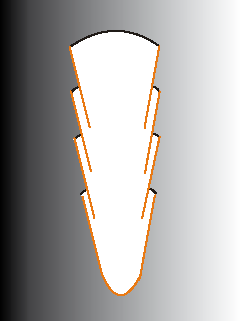 Abstract: Cloudina, an important Ediacaran index fossil, is considered as one of the earliest biomineralizing organisms. Its biological affinities have not been fully resolved and phylogenetic links with both annelids and cnidarians have traditionally been suggested. Differences in tube morphology, ultrastructure and biomineralization suggest that Cloudina is not closely related to any recent skeletal annelid
(e.g., serpulids, sabellids and cirratulids) and their skeletons are not homologous. The way of asexual reproduction in Cloudina resembles more that of cnidarians. The presence of a closed tube origin (base) in Cloudina is also compatible with the hypothesis of an animal of cnidarian grade. Abstract: Cloudina, an important Ediacaran index fossil, is considered as one of the earliest biomineralizing organisms. Its biological affinities have not been fully resolved and phylogenetic links with both annelids and cnidarians have traditionally been suggested. Differences in tube morphology, ultrastructure and biomineralization suggest that Cloudina is not closely related to any recent skeletal annelid
(e.g., serpulids, sabellids and cirratulids) and their skeletons are not homologous. The way of asexual reproduction in Cloudina resembles more that of cnidarians. The presence of a closed tube origin (base) in Cloudina is also compatible with the hypothesis of an animal of cnidarian grade.
|
|
Online since March 12, 2012
|
|
Obituary notice : Nestor J. SANDER.-
Format [HTML] or [PDF
424 KB]
Reference : [Nestor_Sander]
DOI:
10.4267/2042/48262
Lang.:
|
|
 Nestor
John SANDER (December 5, 1914 - February 11, 2012), "Sandy" for
his friends, was a living history book, describing himself as a positivist.
(...) Nestor was sent as a junior geologist for his first assignment to Saudi
Arabia (...). That was before World War II started and much before the country
became known as the major worldwide oil producer. (...) Nestor was one of the founders of
Carnets de Géologie: many non-native English speakers will remember him as a very kind
and generous person who, for instance, helped them polish their manuscripts. Nestor
John SANDER (December 5, 1914 - February 11, 2012), "Sandy" for
his friends, was a living history book, describing himself as a positivist.
(...) Nestor was sent as a junior geologist for his first assignment to Saudi
Arabia (...). That was before World War II started and much before the country
became known as the major worldwide oil producer. (...) Nestor was one of the founders of
Carnets de Géologie: many non-native English speakers will remember him as a very kind
and generous person who, for instance, helped them polish their manuscripts.
|
|
Online since March 11, 2012
|
|
Article 2 [2012]: Revision of the brachiopod species described by A. RISSO, by Christian C. EMIG.-
Format [HTML] or [PDF
674 KB]
Reference: [CG2012_A02]
DOI:
10.4267/2042/45933
Lang.:
|
|
 Abstract: Although Risso's collection has not been found, the current list of twelve recent brachiopod species and thirteen fossil ones identified and described by Risso (1826) in the marine and terrestrial vicinities of Nice deserves revision by taking into account the synonyms accepted today. Adding Argyrotheca cistellula reported in 1920, the list of the extant species of brachiopods collected in the Mediterranean Sea has remained the same until 1994, date from which it increases by two species. Three of the species described by Risso as belonging to Terebratula have been attributed as new species to him: Joania cordata, Argyrotheca cuneata, Lacazella mediterranea, all three are type species of their genus. For the fossil species, only two were identified as synonyms for Terebratula terebratula. Criticized several times, sometimes too severely, for his works on the Mollusca, to which the Brachiopoda were attributed, Risso (1826) as an amateur naturalist completed a honourable work on this latter group, entirely comparable with those of the majority of its contemporaries and more recent authors on this group. Abstract: Although Risso's collection has not been found, the current list of twelve recent brachiopod species and thirteen fossil ones identified and described by Risso (1826) in the marine and terrestrial vicinities of Nice deserves revision by taking into account the synonyms accepted today. Adding Argyrotheca cistellula reported in 1920, the list of the extant species of brachiopods collected in the Mediterranean Sea has remained the same until 1994, date from which it increases by two species. Three of the species described by Risso as belonging to Terebratula have been attributed as new species to him: Joania cordata, Argyrotheca cuneata, Lacazella mediterranea, all three are type species of their genus. For the fossil species, only two were identified as synonyms for Terebratula terebratula. Criticized several times, sometimes too severely, for his works on the Mollusca, to which the Brachiopoda were attributed, Risso (1826) as an amateur naturalist completed a honourable work on this latter group, entirely comparable with those of the majority of its contemporaries and more recent authors on this group.
|
|
Online since February 15, 2012
|
|
Article 1 [2012]: Distribution of brachiopod assemblages in Oxfordian strata of central France, by Annick BOULLIER & Rosemarie FILIPPI.-
Format [HTML] or [PDF
2,153 KB]
Reference: [CG2012_A01]
DOI:
10.4267/2042/45932
Lang.:
|
|
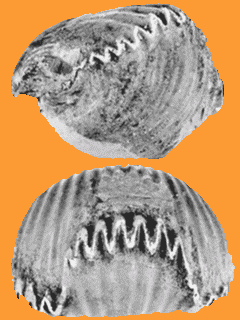 Abstract: In the Berry area, situated in the center of France, the Oxfordian deposits are represented by successions of well individualized and dated formations in which brachiopods have been studied in detail. Several assemblages of brachiopods were found that have given indications on the age of the levels. Some have been recognized within areas more or less far away allowing us to establish correlations. Abstract: In the Berry area, situated in the center of France, the Oxfordian deposits are represented by successions of well individualized and dated formations in which brachiopods have been studied in detail. Several assemblages of brachiopods were found that have given indications on the age of the levels. Some have been recognized within areas more or less far away allowing us to establish correlations.
|
|
Online since February 15, 2012
|
|
|
|